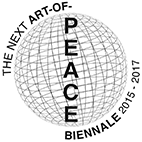Henri Lefebvre: the spatialised trialectic
‘However, Lefebvre’s (1991) own work—The Production of Space—does not marginalise spatial practice (Merri eld, 1995). Rather, Lefebvre recognises the equality of space, place and practice; he does not reduce space and place to the abstract and concrete (Merri eld, 1993b). Instead, spatial practices transform imagined geographies de ned as ‘representations of space’ (i.e. space) into the materiality of everyday life as constituted in ‘representational spaces’ (i.e. place). By failing to privilege either the conceived or lived, many of the essentialist assumptions of radical geography are absent. That is, it is not assumed that either the conceived or lived space is more (or less) important or more (or less) empowered than the other. Consequently, spatial practices (debates, policies and outcomes) are the focus and the relative power of each is contextualised.’
Gatrell, J. D. and J. Worsham (2002). ‘Policy Spaces: Applying Lefebvrian Politics in Neo-institutional Spaces’, Space and Polity, 6(3): 327-342.
‘Whereas some have represented Lefebvre’s spatial schemata in a triadic arrangement of three points (e.g. Gatrell & Worsham, 2002), I prefer to stress its fluidity, openness and relationality. For Lefebvre, spatial practices, representations of space, and representational spaces stand in direct relation to the dialectical triad: the perceived, the conceived, and the lived.’
Pugalis, Lee. “A Conceptual and Analytical Framework for Interpreting the Spatiality of Social Life.” FORUM eJournal 9 (2009): 77-98.
Q. How does the spatialised trialectic map onto the online/offline relationship and vice versa?


